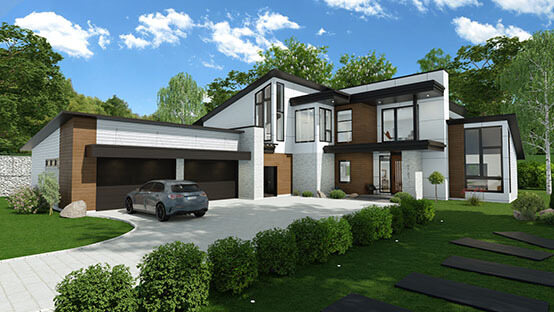
Energy-efficient homes are the future of modern living. But how do residential architects design energy-efficient homes? At Sri Lakshmi Architect, we specialize in creating sustainable, eco-friendly homes that reduce energy consumption while maximizing comfort. With smart design choices and innovative technology, architects make homes that save energy, lower costs, and protect the environment. Let’s explore the key elements that help in designing an energy-efficient home.
Smart Home Orientation
One of the first steps in designing an energy-efficient home is proper home orientation. Architects plan the home’s position based on the sun’s movement. Passive solar design ensures that natural light enters the house, reducing the need for artificial lighting. South-facing windows can help capture sunlight during winter, keeping the house warm. This reduces dependence on heating systems, making the home more energy-efficient.
Using Green Building Materials
A home’s materials play a huge role in energy efficiency. Green building materials like bamboo, recycled steel, and sustainable wood not only lower environmental impact but also provide insulation. At Sri Lakshmi Architect, we carefully select materials that enhance thermal performance, keeping homes cool in summer and warm in winter. High-performance insulation ensures that less energy is wasted, making the home more sustainable.
Installing Smart Home Technology
Modern homes are becoming smarter! Smart home technology helps monitor and control energy usage. From smart lighting solutions that turn off automatically to advanced energy-efficient HVAC systems, these innovations help homeowners save power effortlessly. By using renewable energy solutions like solar panels, architects create homes that run on clean energy, reducing reliance on the grid.
Need More Information? Get in Touch With Our Knowledgeable Team
Maximizing Natural Ventilation
Architects design homes with proper air circulation to keep them cool without using air conditioners. Climate-responsive architecture focuses on large windows, cross-ventilation, and open spaces that allow fresh air to flow naturally. Thermal mass in architecture, like concrete or brick walls, absorbs heat during the day and releases it at night, maintaining a balanced indoor temperature.
Sustainable Water Management
Water conservation is also a part of energy efficiency. Water-efficient home design includes rainwater harvesting, low-flow faucets, and greywater recycling. These features help homeowners save water while reducing their environmental footprint. Sustainable landscaping with drought-resistant plants further minimizes water usage.
Net-Zero Energy Homes
Some architects aim for net-zero energy homes, where the house generates as much energy as it consumes. This is achieved by combining solar panel installation, low-carbon footprint housing materials, and energy-efficient HVAC systems. At Sri Lakshmi Architect, we incorporate these elements to build homes that are truly sustainable and self-sufficient.
LEED Certification and Sustainability Standards
Many energy-efficient homes follow global sustainability standards like LEED-certified homes. These certifications ensure that homes meet strict energy-saving guidelines. Architects carefully design every aspect, from modern sustainable homes to efficient insulation, to make sure they achieve the highest energy ratings.
Conclusion
So, how do residential architects design energy-efficient homes? They combine smart design, sustainable materials, and advanced technology to create homes that use less energy and offer better living conditions. At Sri Lakshmi Architect, we specialize in building eco-friendly homes that not only reduce energy costs but also protect the planet. If you’re looking for a sustainable, energy-efficient home, contact us today to turn your vision into reality!
